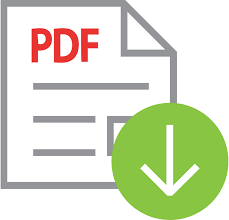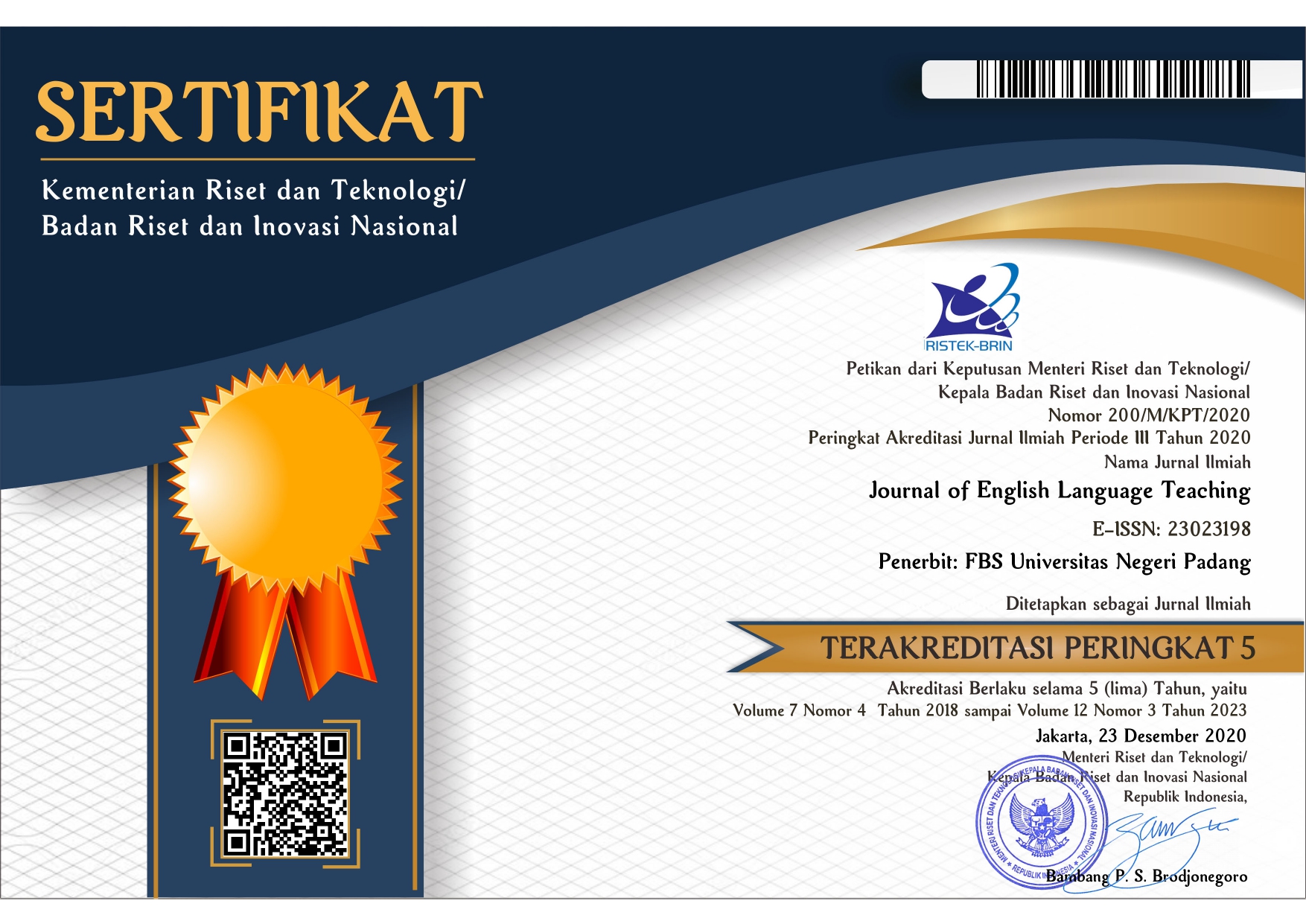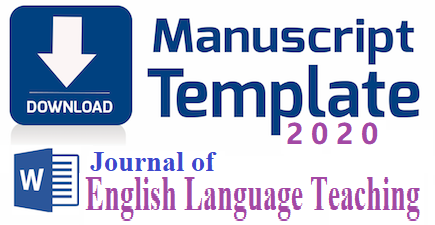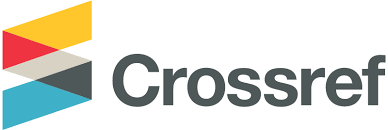Students’ Ability in Identifying Transitivity System: A Study at English Language Education Program of UNP
 ), Sitti Fatimah(2),
), Sitti Fatimah(2), (1) Universitas Negeri Padang
(2) Universitas Negeri Padang
 Corresponding Author
Corresponding Author
Copyright (c) 2024 Dinda Fadrinasesa
DOI : https://doi.org/10.24036/jelt.v13i3.130591
Full Text:
 Language : en
Language : en
Abstract
Keywords
References
Aisaro, K., & Suhardi. (2023). Transitivity and context of the situation in the news text. Britain Internatinal f Linguistics Arts and Education Journal.
Apendi, T. L., & Mulyani, E. R. (2020). The analysis of transitivity process of students' descriptive texts. 3(3), 359–366.
Bahri, S. (2016). Peran Al-Siyaq (Konteks) dalam menentukan makna. Ittihad Jurnal Kopertais Wilayah XI Kalimantan, 14.
Blake, F. (1988). Traditional english grammar and beyond (1st ed.). The Macmillan Press LTD.
Butt, D., Fahey, R., Feez, S., Spinks, S., & Yallop, C. (2003a). Using functional grammar: an explorer’s guide (2nd ed.). Macquire University.
Creswell, J. W. (2009). Research design: qualitative, quantitative, and mixed methods approaches (3rd ed.). Sage Publications.
Eggins, S. (2005). An introduction to systemic functional linguistics. Continuum Publishing.
Fraenkel, J. R., Wallen, N. E., & Hyun, H. H. (2012). How to design and evaluate research in education (8th ed.). McGraw Hill Companies.
Gerot, L., & Wignell, P. (1994). Making sense of functional grammar. Gerd Stabler.
Halliday, M. (2014). Introduction to functional grammar (3rd ed.). Great Britain.
Halliday, M., & Matthiessen, C. (1999). Construing experience through meaning: a language based approach to cognition. Bloomsbury Academic.
Hancock, C. (2005). Meaning-Centered grammar: an introductory text. Equinox Publishing.
Harto, S., & Handayani, S. (2019). Major problems in analyzing transitivity: a case from Indonesia. English Journal Literacy Utama, 3(2), 77–88.
Jorgensen, M., & Philips, L. (2002). Discourse analysis as theory and method. Sage Publications.
Lise, F. (2012). Analysing english grammar: a systemic functional grammar introduction. Cambridge University Press.
Lock, G. (1997). Functional english grammar: an introduction for second language teachers. Cambridge University Press.
Maili, S. N. N., Ayu, D. M. I., & Sondari, E. (2022). Student perception on parts of speech after taking integrated english. Basis UPB Journal, 9.
Martin, J. R. (1992). English text: system and structure. John Benjamins Publishing.
Naderi, H., Abdullah, R., Aizan, H. T., Sharir, J., & Kumar, V. (2009). Creativity, age, and gender as predictors of academic achievement among undergraduate students. Journal of American Science, 5.
Shahar, T. H. Ben. (2022). Ability and ability roup. Research Gate. https://doi.org/10.4324/9781003172246-38
Sugiyono, D. (2013). Metode penelitian kuantitatif, kualitatif, dan tindakan. Alfabeta CV.
Thornbury, S. (1999). How to teach grammar. England. Longman Press.
Wachyudi, K., & Adn, S. Z. (2021). A transitivity analysis of an EFL teacher talk. Jurnal Pendidikan Unsika, 9, 37–48.
Zhu, L. (2020). Explanation of picture language by stratification of Systemic Functional Linguistics (SFL). Education and Humanities Journal, 507.
Zidan, M. (2023). Learning difficulties theories and solutions. Neoma Journal of Humanities and Literature, 1. https://doi.org/10.5281/zenodo.7992073
 Article Metrics
Article Metrics
 Abstract Views : 52 times
Abstract Views : 52 times
 PDF Downloaded : 22 times
PDF Downloaded : 22 times
Refbacks
- There are currently no refbacks.
Copyright (c) 2024 Dinda Fadrinasesa

This work is licensed under a Creative Commons Attribution-NonCommercial 4.0 International License.
















